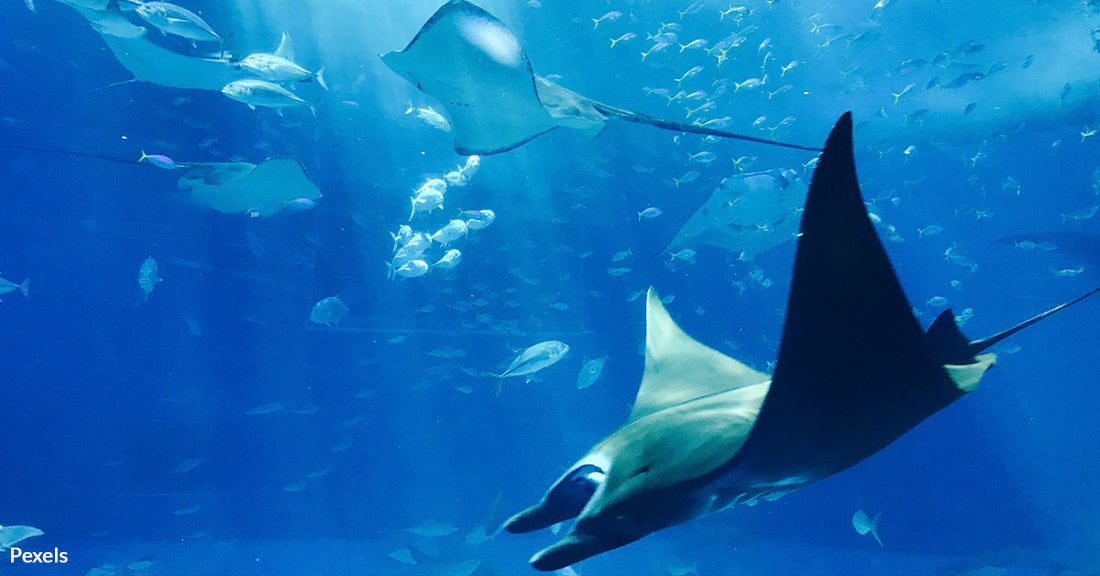7th Annual Holiday Toy & Book Event Help make the holidays brighter this year!
Unseen Destruction Beneath Hurricanes’ Deadly Waves — How Marine Life Survives A Hurricane
Matthew Russell
When hurricanes sweep across coastal waters, their destructive power isn’t just limited to land. Under the surface, marine ecosystems face unique and often deadly challenges. From high waves to rapid changes in salinity, the effects on sea life can be profound, and understanding these impacts helps highlight the interconnectedness of marine and terrestrial environments.

The Immediate Threat: Powerful Waves and Currents
As hurricanes form over warm ocean waters, they feed off surface heat, which helps them intensify. This also leads to the creation of massive waves—some reaching up to 60 feet in height—and strong undercurrents that can extend hundreds of feet below the surface. The mixing of warm surface water with cooler, deeper waters brings about drastic changes in temperature and oxygen levels. Marine animals are thrown into this underwater chaos. Slow-moving creatures like turtles, fish, and benthic organisms often face the brunt of the storm, while faster, more agile animals can escape to deeper, calmer waters.
Marine scientist Mark Patterson from Northeastern’s Marine Science Center explains that many fish can sense an approaching storm and flee to safer areas. Sharks, for instance, which do not rely on swim bladders for buoyancy, are especially quick to react.
"A lot of fish sense a disturbance like this and go to deeper water," Patterson told Northeastern Global News.
These sharks are not only fast but may also have special sensory abilities that help them detect changes in barometric pressure before the storm hits.
Meanwhile, creatures that cannot flee, like corals and anemones, face devastating consequences. Hurricanes’ waves can tear apart reef structures, or worse, bury immobile animals under layers of displaced sediment. This damage was evident after Hurricanes Irma and Maria, where reefs in Florida and Puerto Rico saw significant losses of coral cover, as reported by a NOAA study.

Oxygen and Temperature Imbalances
Hurricanes stir up the water column, which can introduce colder, oxygen-depleted waters to the surface. This disruption can suffocate marine organisms that rely on oxygen-rich environments. Fish and other mobile animals often die from this sudden lack of oxygen, a phenomenon known as hypoxia, according to Ocean Conservancy.
In the case of slower-moving fish or those trapped in shallow waters, the situation is particularly dire. Species that depend on the stability of their environment can struggle to survive after such an extreme change. During Hurricanes Irma and Maria, researchers found that storm-driven temperature shifts altered the marine landscape, with fish populations experiencing a rapid decline before rebounding weeks later.

Salinity Shifts and Rainfall Effects
One of the biggest challenges for marine life during hurricanes comes not from the wind, but from the rain. Hurricanes dump enormous amounts of freshwater into marine ecosystems. In areas like the Indian River Lagoon, where salinity levels dropped by 11% after two hurricanes, the changes were so abrupt that entire fish populations perished. The influx of freshwater alters the delicate balance of salt and freshwater species, leading to massive die-offs, according to the National Oceanic and Atmospheric Administration (NOAA).
Salinity isn’t the only water quality change. Pollutants from land-based runoff also seep into coastal waters during storms. Hurricanes have caused hog waste ponds in North Carolina to overflow, contaminating nearby waterways with toxins. Runoff from such events can fuel harmful algae blooms, further depleting oxygen in the water and creating dead zones where marine life cannot survive.

Life After the Storm
Despite the damage hurricanes cause, they can also trigger beneficial processes in the marine environment. The mixing of water layers during a storm often brings nutrient-rich deep waters to the surface. This influx of nutrients can lead to blooms of phytoplankton, which form the base of the marine food chain. Increased plankton growth attracts zooplankton and small fish, creating a temporary boom in food availability for larger predators, like seabirds and dolphins. According to the Woods Hole Oceanographic Institution, these post-storm plankton blooms are critical for replenishing ecosystems, as they support a surge in marine life in the weeks following a hurricane.
Additionally, some resilient species like tiger sharks have been known to thrive after storms. In the Bahamas, tiger shark populations nearly doubled after Hurricane Matthew, as they scavenged on dead marine life left in the storm's wake. Shark populations tend to recover swiftly, showing their adaptability to extreme events, Patterson told Northeastern Global News.

The Future of Marine Life in a Warming World
As climate change intensifies, the frequency and strength of hurricanes are likely to increase, further endangering marine ecosystems. Warmer ocean waters not only fuel stronger storms but also disrupt long-standing patterns in marine biodiversity.
Melissa May, a marine biologist, told The Week that “our ecosystems are actually designed every once in a while to kind of get wiped out,” but with shorter recovery times between storms, ecosystems may not be able to bounce back as easily.
In a world with more intense storms, it’s critical to understand how these systems adapt—and how we can protect them. Balancing recovery efforts on land with marine conservation can help ensure the resilience of ecosystems that are vital to both marine life and human industries.
Click below to take action for animals impacted by hurricanes Helene and Milton!

